Local producers are struggling to keep the industry from being taken over by corporate behemoths.
SAN JUAN DEL RIO, Mexico—
“They say that people in America like mezcal a lot,” says Fortunato Angeles, leaning on a wooden tank of fermenting agave. “I like the work because it puts food on the table.”
Four generations of his ancestors have distilled the smoky spirit from ripe maguey, or agave, toiling under the Oaxacan sun in southern Mexico to provide the fuel for festivals and family celebrations in the village of San Juan del Rio.
Angeles rubs a drop of his juice on his palms, cupping them around his nose to check the quality of his product. The first whiff of the potent spirit is pure alcohol, but then richer, caramel and fruit flavors bloom.
“It’s the work I learned when I was a little boy,” says Angeles, looking out from the palenque, or mezcal distillery, where he roasts, crush, ferments, and distills alongside his uncle, Arnulfo, and two other maestro mezcaleros.
Mountains stretch out to the horizon, steep slopes breaking in every direction around Angeles’ hometown, which is nestled in a deep valley. All of the land is communally owned, divvied up by a town council into small plots where residents practice traditional milpa subsistence agriculture rotating maize, beans, chilis, squash, and agave.
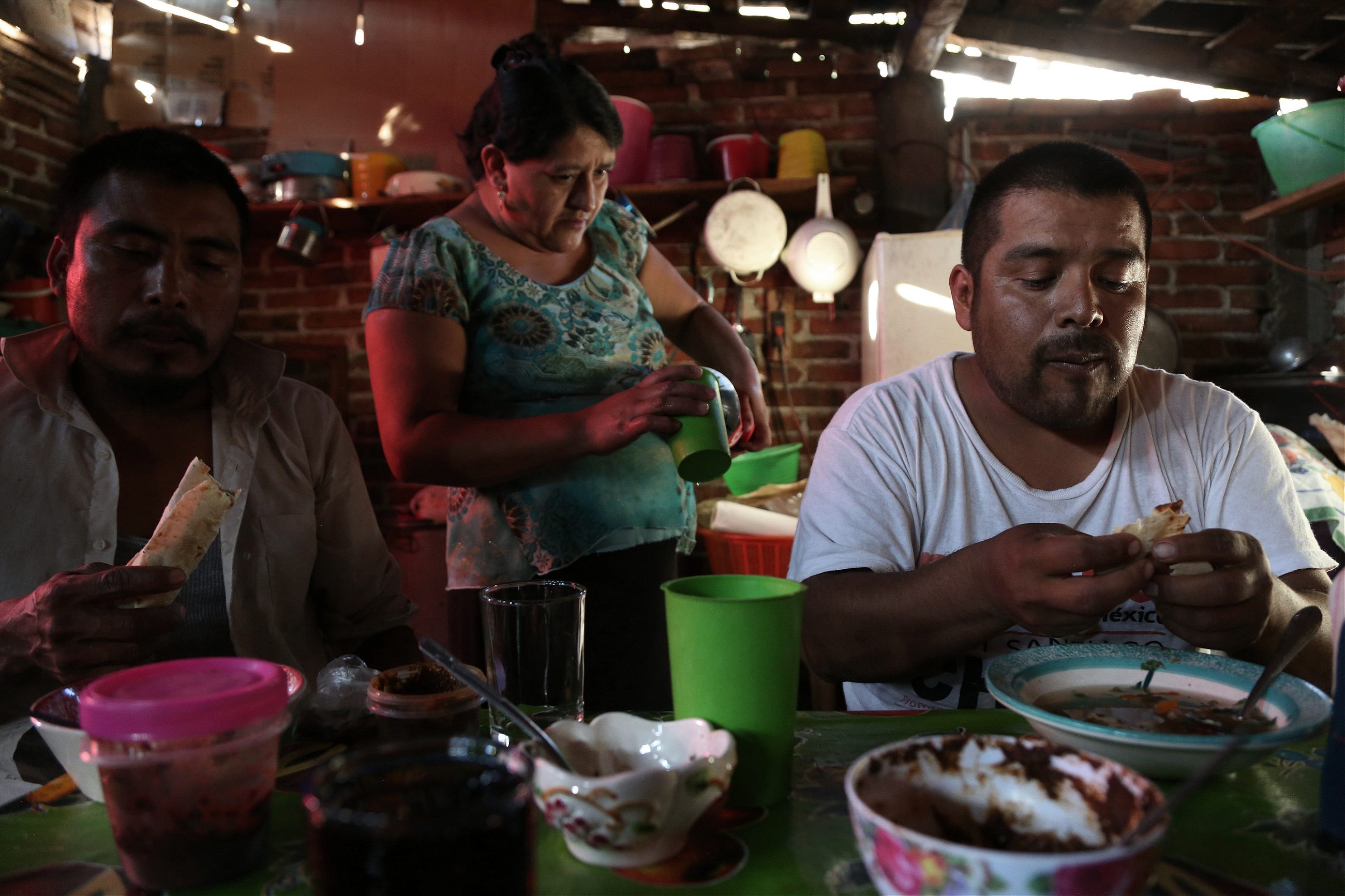
The terrain has kept the Zapotec-speaking community relatively isolated since it was founded in 1417. Rough roads out of town eventually reach the highway, but most people walk, ride horses, or hitchhike on scarce passing pickups. Though many of the town’s residents spend at least a few years in America to increase their income, ambitions tend to be local: marry, have kids, keep the long cycles of agriculture going.
But there’s a growing interest in Angeles’ product. The global economy has suddenly started showing up at the doorstep of tiny San Juan del Rio. Mezcal has landed on hip cocktail lists and mezcal-focused bars across the United States, putting international price tags up to $70 or more per bottle on what was traditionally a village drink sold in recycled Coke bottles for about five bucks. The market is still small. Only 2.4 million liters of mezcal were produced in 2015 compared with tequila’s 228.5 million liters. But mezcal production has more than doubled since 2011, drawing the attention of big brands.
Thirst for the drink is pushing well-funded entrepreneurs to work with subsistence farmers, offering incredible opportunity for some of Mexico’s poorest regions but putting their traditions in the path of the global market machine. Right now, the industry has the potential to build a sustainable future that supports all of the links in the chain. But the process could easily be coopted by big brands dominating undercapitalized traditional producers.
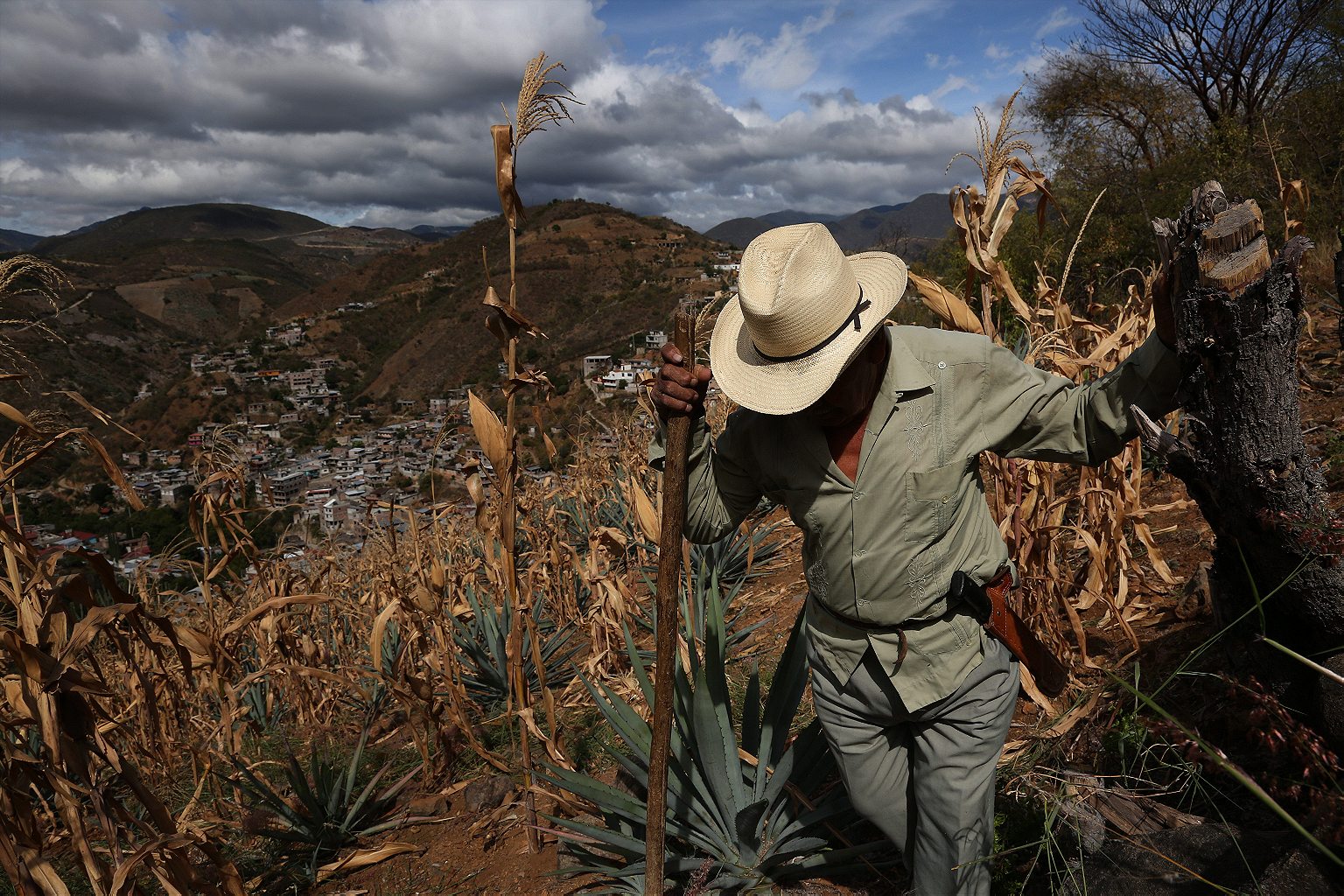
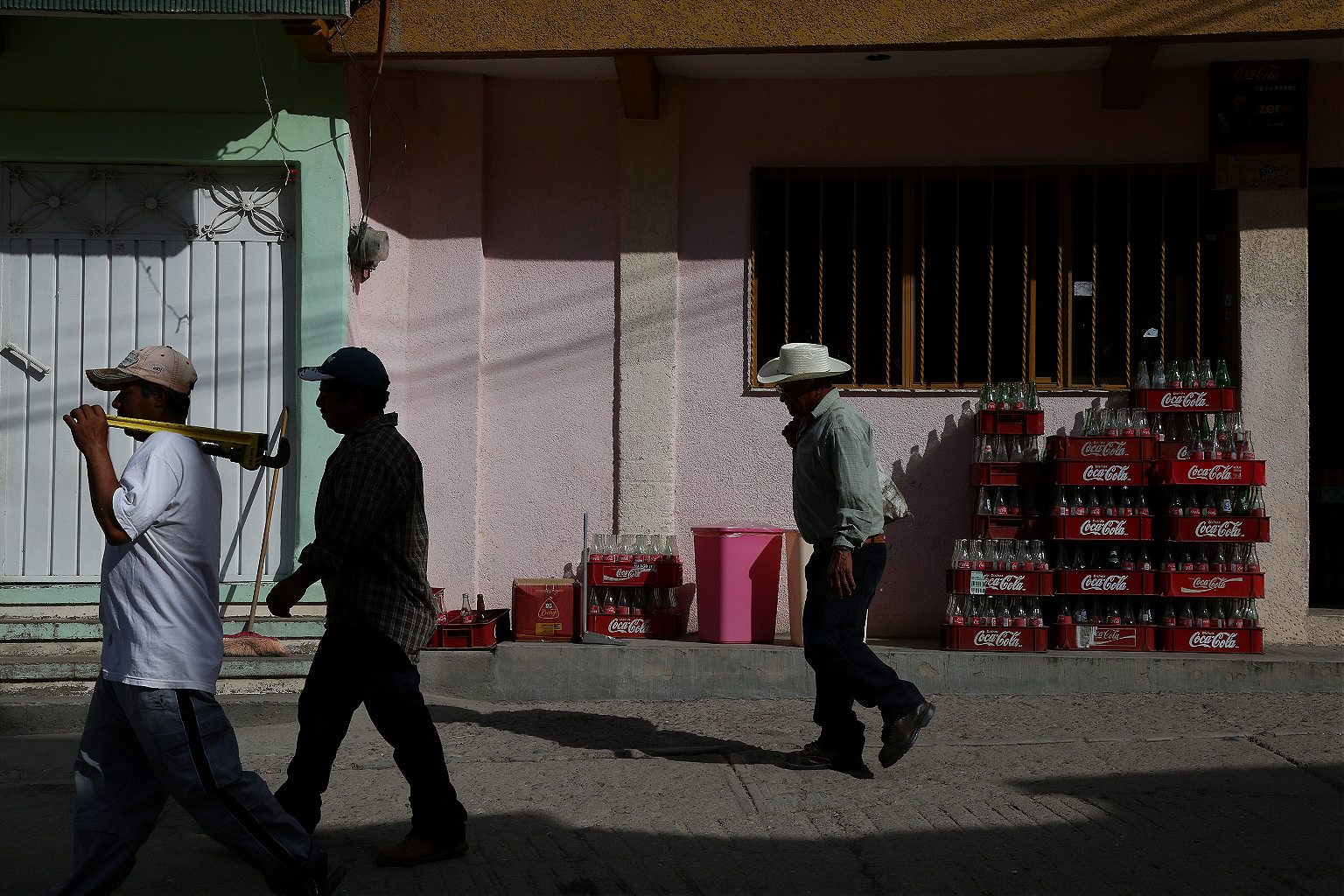
At an overgrown villa in a posh Mexico City neighborhood, I make my way past private security guards into a cinematically lit swirl of chic capitalenos. The house played host to a who’s who of 20th century art in its day, but years of abuse had left it ready for a makeover. I pushed my way to the bar, where a representative from Mezcal Amores was handing out drinks.
Amores got its start when Santiago Suárez started working in Oaxaca in 2010. He was a Mexico City kid who, like many of his generation, grew up with cosmopolitan tastes and tended toward international standards like beer and whiskey. He remembered mezcal from high school as a cheap addition to sugary punches, the Everclear of Mexico.
But while working with poor communities in southern Mexico, he discovered the richness of the spirit and realized that it could appeal to an international palate. A successful mezcal company would need to harness skilled practitioners of ancient distilling techniques as well as modern marketing strategies, connecting segments of society with little trust for each other. From the beginning, Suárez saw Amores as a company that could bridge this divide.
“It’s very easy for me to build a big palenque and produce everything ourselves, but that’s not the philosophy,” he explains. Instead, Amores works with 15 producers in 11 different sites around the states of Oaxaca and Guerrero.
Two years ago, Suárez traveled to San Juan del Rio after hearing about a palenque that made excellent mezcal. They liked Angeles and his partners, and were impressed by their quality standards, so they offered the team a deal. Amores would buy everything they could produce at 20 percent over cost and offered a microloan to expand the palenque so that it could produce a target 2,000 liters of mezcal per month.
For Angeles, this meant a guarantee of cash paid upfront for his hard work, rather than piecemeal profits earned by the bottle or party, and helped him grow his sales from 30,000–50,000 pesos per year to 150,000–200,000 pesos per year. He also takes pride in the fact that that his liquor is suddenly being enjoyed outside his home valley. “It’s in Europe, New York,” he says. “It’s incredible. I never thought that would happen.”

But not everything is going smoothly. The palenque isn’t hitting production targets, causing friction with Amores.
Years ago, Angeles went to America to earn extra money but came home because he preferred the pace of life in the village. He’s happy to work with Amores, but he didn’t seek out the opportunity. He’s content living in a small house with his wife, aunt and uncle, sister, brother-in-law, and niece: a perfectly normal life in a subsistence-farming town.
Suárez can’t understand why Angeles and his fellow producers aren’t jumping at the chance to expand. He sees his offer as representing a nearly limitless flow of cash into the small town. Now, one mezcalero uses the palenque at a time, as they always have. Suárez sees wasted time and space. Roasting agave and milling it takes three to four days, so why not have both those processes going continuously? There are unused fermentation vats anyway. And why not add a night shift to speed things along and then build an extra oven to roast two batches at once?
Rural mezcaleros, Suárez says, are not thinking along the lines of international branding but instead wondering about more tangible benefits. More than once, investments he’s made in palenques have instead been used to buy washing machines and make other household improvements.
Even when some mezcaleros start to think big, they often lack the knowledge and support structure to launch a successful venture. Angeles thinks that he might someday be able to have his own mezcal brand, but he worries that the cost of running an internationally distributed business might run to astronomical heights, so he’s more than happy to work with Amores for now.
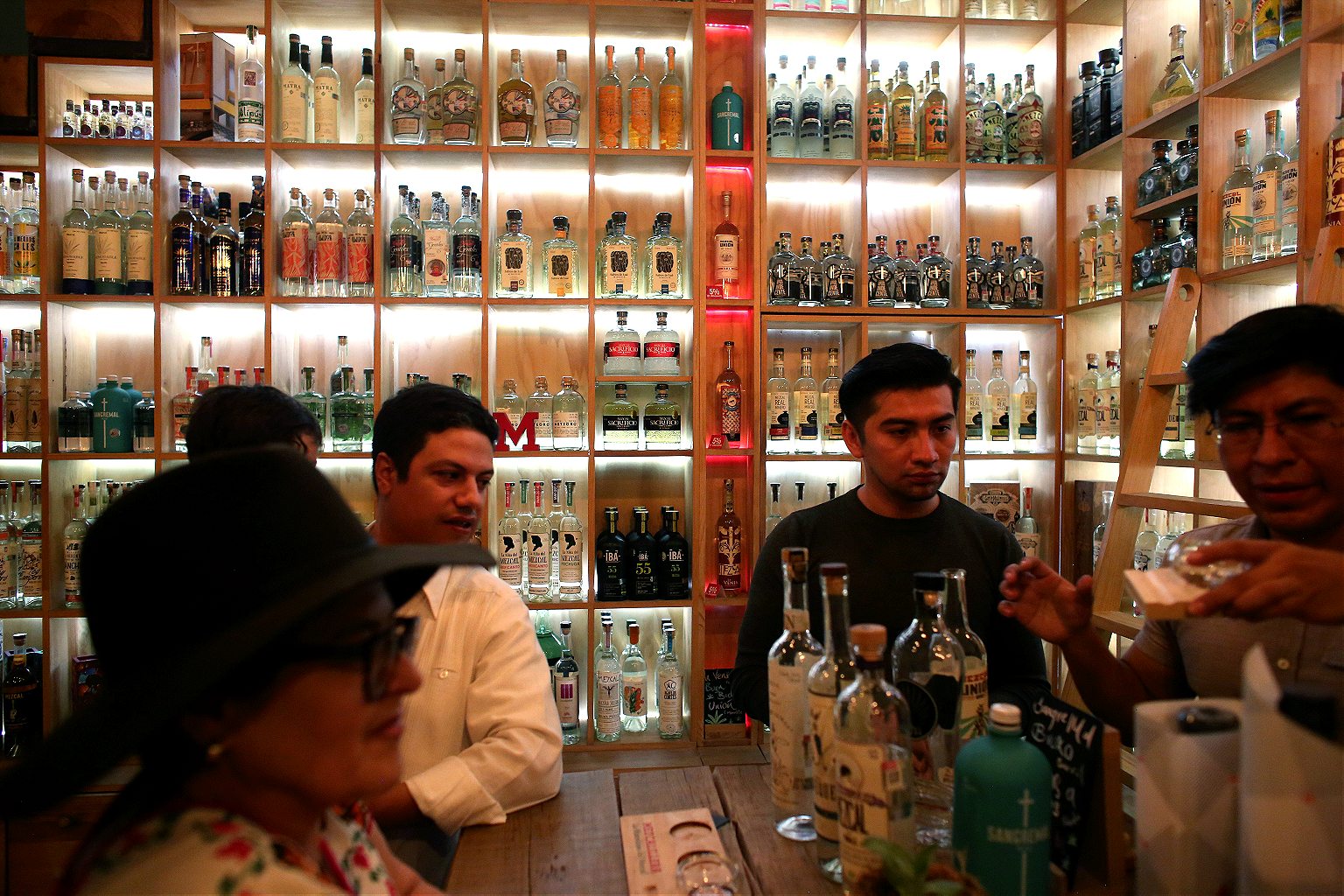
The main street of Santiago Matatlan, about an hour south of Oaxaca City, is littered with palenques. The town bills itself as “The World Capital of Mezcal,” with more distilleries than I could count hawking their liquor from tasting rooms. But it took me a while to find the one I was looking for. I had to ask for directions three times and was pulled over by the police while going the wrong way down a one-way street before I found the home of Mezcal El Cortijo tucked behind the town’s cathedral.
Fortunately, Raúl Méndez, one of the brothers who runs the company, was walking into the unmarked hacienda as I pulled up.
Mezcal El Cortijo is the world’s oldest mezcal brand. Méndez’s grandmother grew up in Jalisco and watched the tequila industry take off. She made sure her husband pulled together the paperwork to formalize and bottle the moonshine he was becoming famous for at the time.
Now, the company is pursuing the same business model as Amores, buying from six palenques and selling bottles decorated with stunning artwork. This has helped the family grow their brand and brought their mezcaleros’ products to audiences they never could have reached alone.
“Lots of producers don’t have the capacity to meet the standards and certify their products,” Méndez explains as we sip from El Cortijo’s Maestros Mezcaleros collection at a dusty bar in his family’s courtyard.
Since his grandfather’s time, the mezcal industry has moved from a bootlegging business to an industry with strict rules and regulations. The guidelines are structured as a denomination of origin law, much like those that govern wines from Burgundy or Champagne, protecting mezcal from foreign incursion.
However, a new version of the law passed at the end of 2015 has added more requirements, adding to the already high startup costs involved in launching and sustaining a mezcal brand. For instance, all distilled liquor must now be submitted to laboratory testing at the expense of the distiller. This aims to reduce the risk of methanol poisoning, which can cause blindness or liver damage, but the extra cost is discouraging to lone mezcaleros who are looking at startup costs that already exceed their annual income.
While this hasn’t stopped less affluent mezcaleros from producing and selling their liquor to their neighbors, it makes it difficult for them to even dream of accessing a more lucrative market alone.
“It seems to me that it will evolve bit by bit,” says Méndez. He believes that such laws are necessary—a lack of testing in the ’70s led to a string of methanol poisonings that crashed the market—even if they aren’t yet perfect.
One concern is that these laws give an advantage to massive brands that can lobby to shift legislation in their favor. There is fear among many in the industry that a corporate behemoth entering the competition would immediately end the broader wealth distribution that companies like Amores and El Cortijo champion.
“It’s tough to keep up with the market without industrializing,” says Méndez, “but we already know the market, the people, the knowledge. New companies find this difficult.”
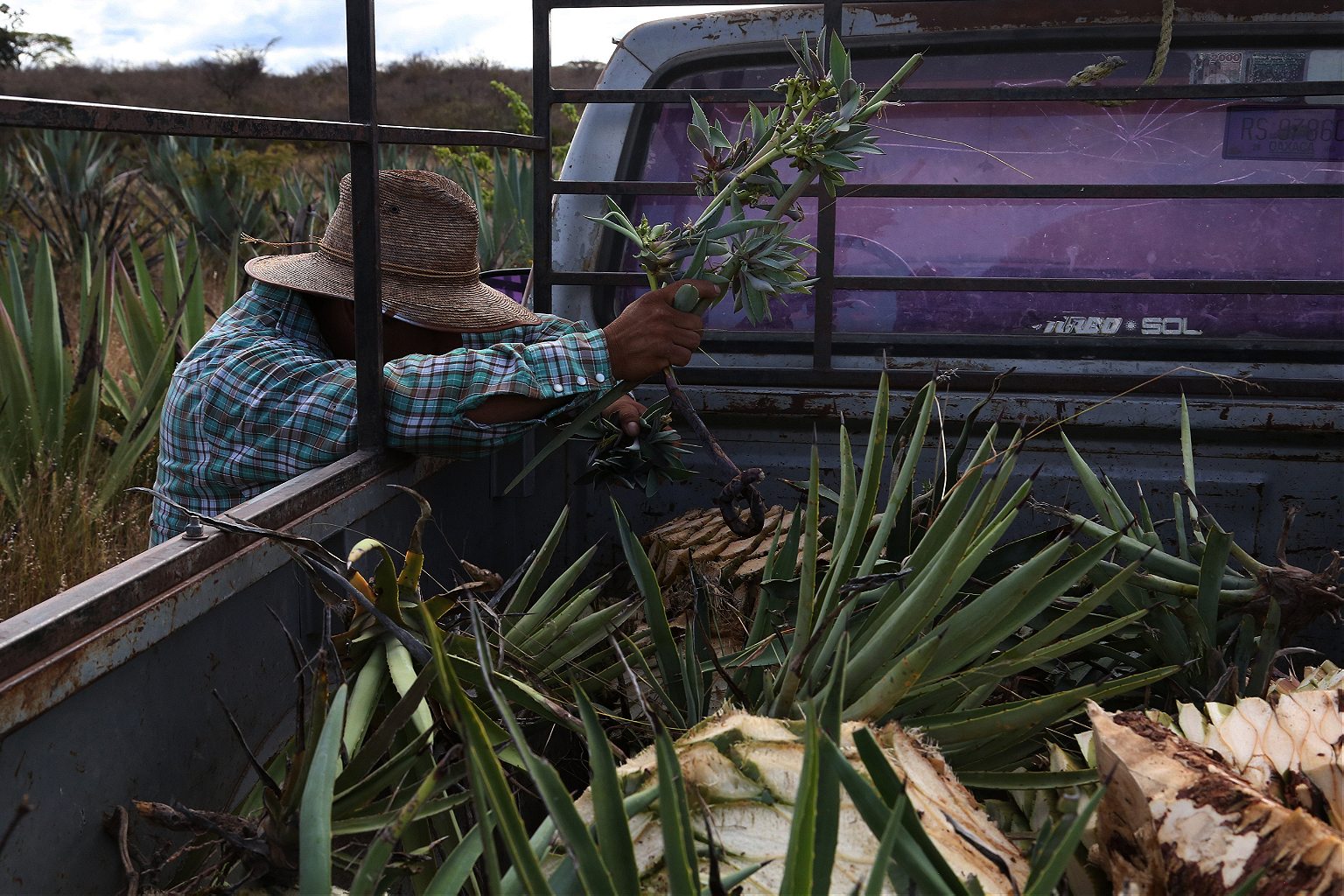
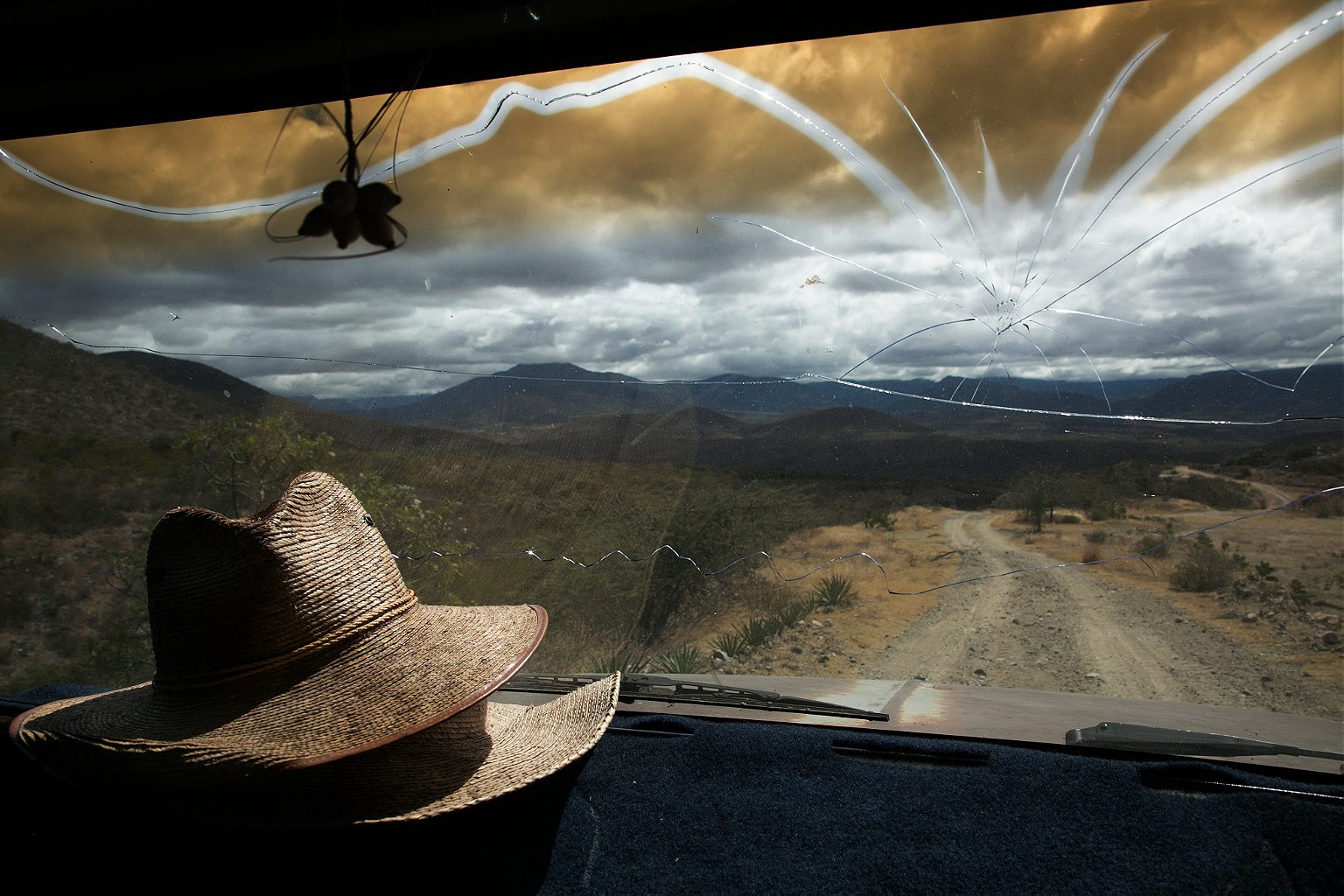
Mezcal Amores is working on applying technology to the future of mezcal at a new center they’re building in Tlacolula, 45 minutes south of Oaxaca City.
The facility will have all of the pieces of a traditional palenque: ovens cut into the ground to roast agave, tahonas where mules pull massive stones to grind the roasted pinas, wooden tanks to ferment, and then copper stills to finish the mezcal. But there will also be an on-site lab that will work to quantify the process.
Right now, mezcal is made like your grandmother’s ragù: a pinch of this and some of that until it looks right, cook until it’s done, adjust to taste. Mezcal Amores want to start studying the process more precisely to understand the impact of different oven temperatures, agave sugar contents, and other variables on the finished product. Centuries of trial-and-error have resulted in a diversity of excellent mezcals, but there’s always a chance to learn more.
“The idea is to have the same knowledge, but scientific,” says Suárez, looking over blueprints for the new palenque. He describes touring a Scotch factory where distillers knew the optimal distilling temperature to one-tenth of a degree. Mezcal’s marketing relies on its rustic roots, but if it’s going to compete with other global craft spirits and fend off incursions from industrial brands, the next generation of mezcaleros is going to need a different mindset.
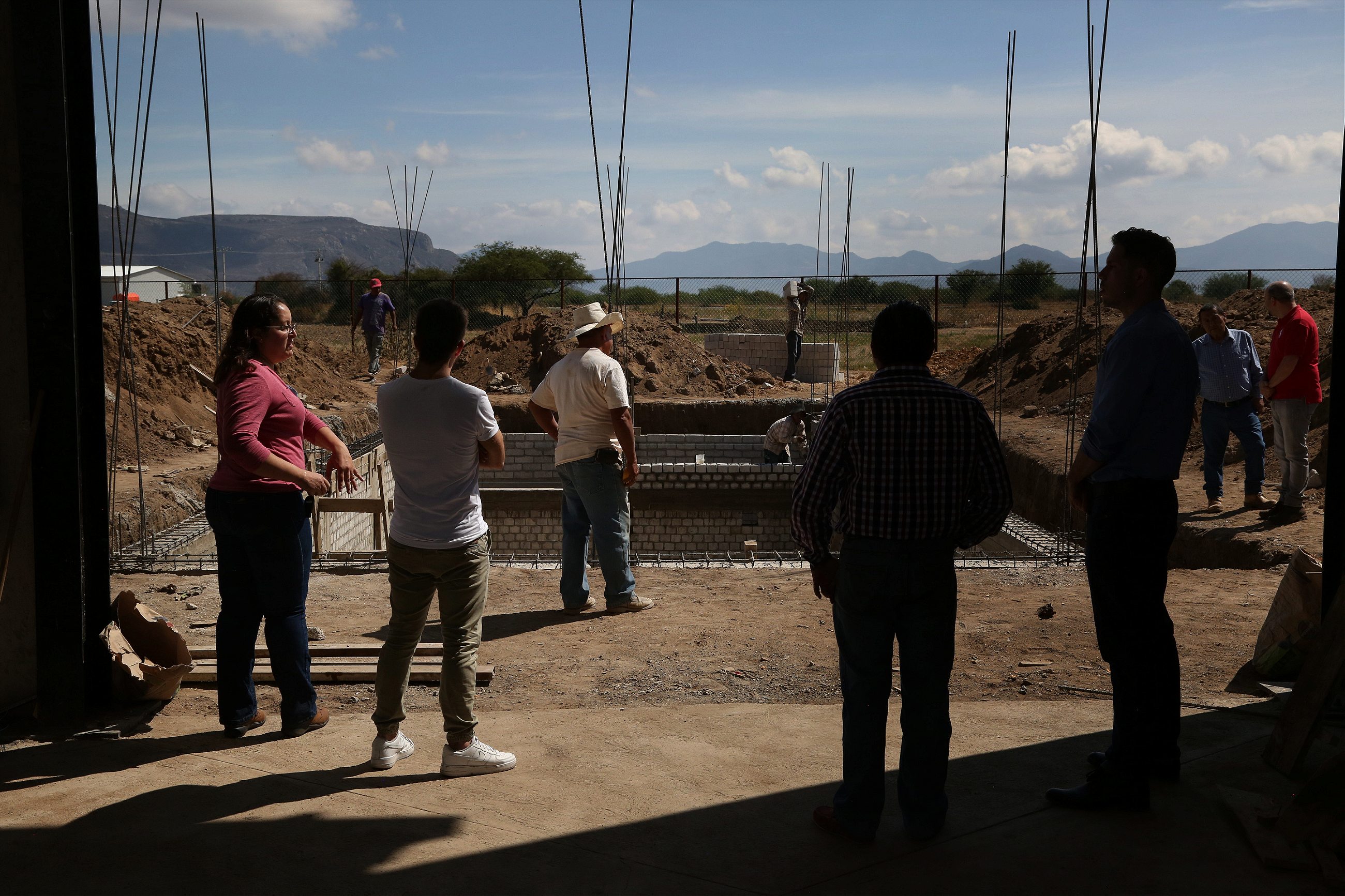
Looking towards a prosperous future, Amores is also investing in more diverse agave cultivation. There are more than 100 varieties of the plant, tens of which are used in mescal production, but most of which only grow in the wild.
Typically, only the espadin variety is farmed because it is the fastest to mature, taking only five to six years, whereas other varietals might need 35 years before they’re ready to harvest. However, Suárez wants to explore other cultivation options before the demand for more exotic mezcals drains the supply of wild plants.
“Some people are marketing their mezcals like, ‘Drink this before it goes extinct,’ but that’s bullshit,” he says. “Just plant more of those wild agaves.”
Outside the Tlacolula facility, there are beds of baby agaves sewn for the business’ future. Pointing to different species, Suárez describes a vibrant center for mezcal preservation and innovation.
This project will employ young mezcaleros rather than buying from established palenques. This will allow Amores to distribute a cheaper line of mezcal, with the target of selling it for around $30 per bottle, as opposed to the spirits they distribute for master mezcaleros like Angeles, which sell for closer to $100. The goal is to simultaneously educate the next generation and prepare them to compete as the sector expands.
“If we don’t teach the mezcaleros to grow, the industry will go like tequila,” explains Suárez, worrying that individual masters will be replaced with mechanical processes.
Jose Cuervo has made offers to buy the business, but Suárez has refused. His investors have so far put in $1 million every year, and the business has yet to turn a profit, but Suárez sees the growing number of palenque partners and plants as signs of a bright future.
“We plan to be here for a long time,” he says.
